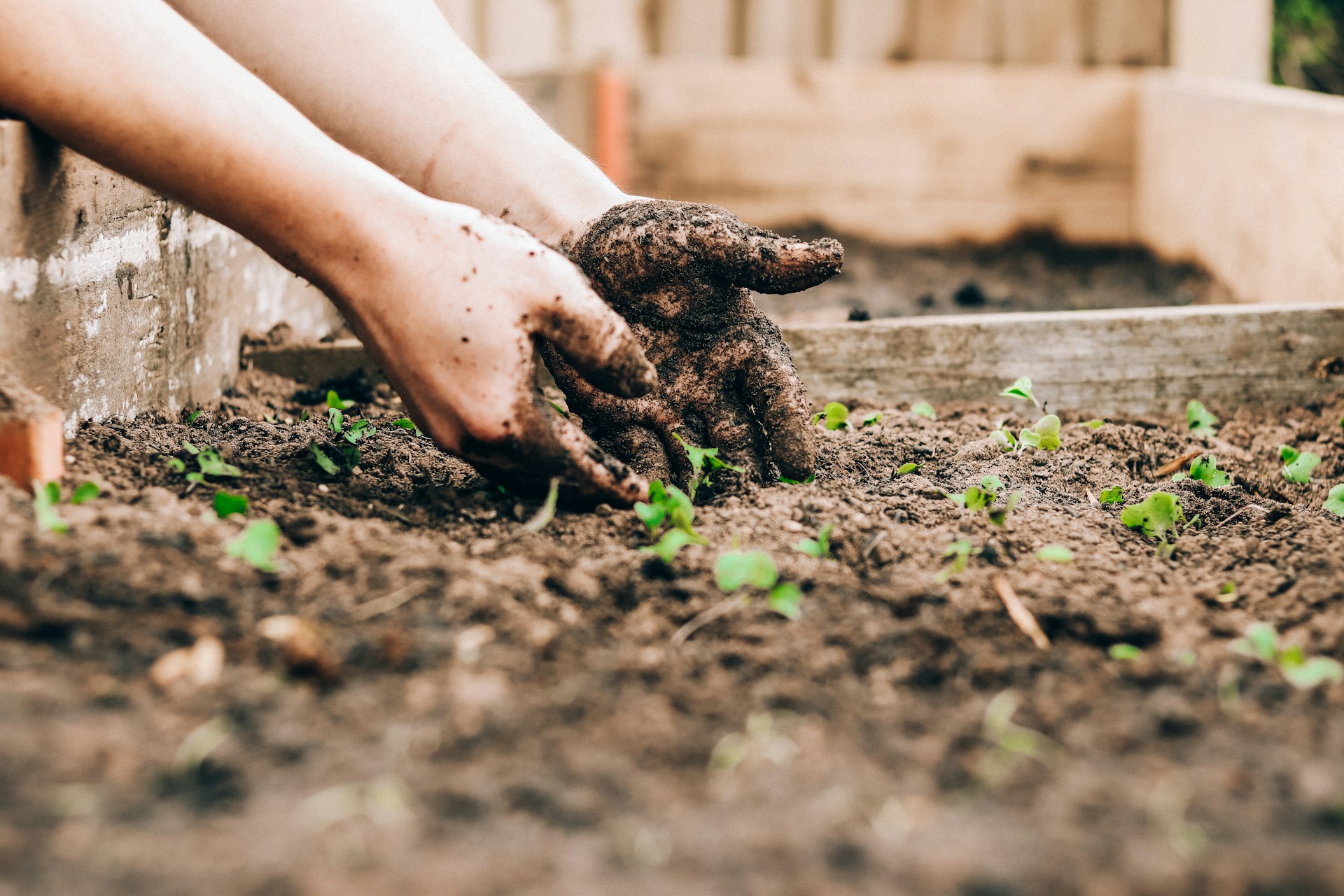Maintaining a vibrant raised bed garden is a rewarding yet challenging task. You’ve put in the effort to create the perfect soil mix, chosen the right plants, and designed a layout that suits your space.
But despite your best efforts, problems like pests, blossom end rot, and fungal diseases can still creep in.
So, what’s the best way to tackle these issues before they get out of hand?
Understanding how to manage these issues is key to maintaining a lush, productive garden. There’s a lot to consider, from keeping pests under control with natural solutions to preventing blossom end rot by managing calcium levels and tackling fungal problems with proper techniques.
So, let’s discuss practical strategies for keeping your raised bed garden healthy and flourishing.
What’s Bugging Your Raised Beds? Common Issues and How to Spot Them
1. Pests
Raised beds, while offering a controlled environment, can still be susceptible to various pests that can impact plant health. Common pests include:
Aphids: These small, soft-bodied insects can cluster on new growth, sucking sap from plants and transmitting viruses. They often produce a sticky substance known as honeydew, which can lead to sooty mold growth. According to the USDA’s Integrated Pest Management guidelines, aphid control methods include using insecticidal soap and the introduction of natural predators like ladybugs.
Snails and Slugs: These mollusks are notorious for their feeding habits on tender plant tissues. They can cause significant damage, especially in moist environments. The University of California Agriculture and Natural Resources suggests using barriers like copper tape or diatomaceous earth and employing biological controls like nematodes.
Spider Mites: These tiny arachnids thrive in dry conditions and can cause stippling or a bronzed appearance on leaves. They can be managed through regular water sprays to dislodge mites and by introducing predatory mites.
2. Blossom End Rot (BER)
Blossom End Rot (BER) is a common physiological disorder in raised bed gardens, particularly affecting tomatoes and peppers. It is characterized by a dark, sunken area at the blossom end of the fruit.
According to the National Institute of Food and Agriculture (NIFA), BER is primarily caused by a calcium deficiency in the plant, which can be exacerbated by inconsistent watering practices. Calcium is essential for cell wall structure and stability, and a lack of it can disrupt normal fruit development.
Factors contributing to BER include:
- Inconsistent Soil Moisture: Irregular watering can lead to fluctuations in calcium uptake.
- Soil pH Imbalance: Extremely high or low pH levels can affect calcium availability.
- Nutrient Imbalance: Excessive nitrogen can inhibit calcium uptake
3. Fungus
Fungal problems can be particularly challenging in raised beds due to the close proximity of plants and potentially high humidity levels. Key fungal issues include:
Powdery Mildew: This disease is a white, powdery substance on leaves and stems. It thrives in conditions of high humidity and poor air circulation. Research from the University of Maryland suggests managing powdery mildew through proper spacing, avoiding overhead watering, and applying organic fungicides like potassium bicarbonate.
Downy Mildew: Downy mildew causes yellowing and a downy gray or purple fuzz on the undersides of leaves. It prefers cool, moist conditions. The USDA recommends improving air circulation, removing infected plant parts, and using fungicides if necessary.
How Can You Keep Garden Pests at Bay?

Effectively managing pests, blossom end rot (BER), and fungal issues in raised beds requires a strategic approach. Here’s how you can proactively prevent these challenges:
Integrated Pest Management (IPM): IPM is a holistic approach that combines multiple strategies to manage pests in an environmentally and economically sound manner. According to the USDA, IPM involves monitoring pest populations, setting action thresholds, and combining biological, cultural, mechanical, and chemical controls.
Physical Barriers: Using barriers such as floating row covers, netting, or copper tape can physically block pests from reaching your plants. Research from the University of California’s Agriculture and Natural Resources highlights the effectiveness of these barriers in preventing pest damage, especially for snails and slugs.
Natural Predators: Introducing or encouraging beneficial insects like ladybugs, lacewings, and predatory mites can help control pest populations. The University of Florida notes that these predators can significantly reduce aphid and spider mite numbers without the need for chemical pesticides.
Companion Planting: Certain plants can naturally repel pests or attract beneficial insects. For example, marigolds can deter nematodes, while planting dill or fennel can attract predatory beetles. Research from Penn State Extension supports the use of companion planting as a practical and sustainable pest management technique.
Regular Monitoring: Frequent inspections of your plants can help detect pest issues early. The University of Illinois Extension recommends regularly checking the undersides of leaves and stems for pests and their eggs to implement control measures promptly.
How to Keep Blossom End Rot Away?

Calcium Management: Ensuring adequate calcium levels in the soil prevents BER. The University of Georgia Cooperative Extension recommends soil tests to help determine if calcium is needed. If deficiencies are found, incorporating lime or calcium supplements into the soil can help.
Consistent Watering: Maintaining even soil moisture is essential. According to research from Michigan State University, inconsistent watering can lead to fluctuations in calcium uptake and increase the risk of BER. Implementing a consistent watering schedule and using drip irrigation can help keep soil moisture levels stable.
Soil Testing and pH Adjustment: Regular soil testing can help you monitor and adjust soil pH to ensure it remains within the optimal range for calcium availability. The University of California Agriculture and Natural Resources advises maintaining a pH of 6.0 to 6.8 for best calcium uptake.
Mulching: Applying a layer of mulch can help retain soil moisture and prevent rapid fluctuations in soil temperature, which can contribute to BER. According to Cornell University, organic mulches like straw or wood chips effectively maintain consistent soil conditions.
How to Prevent Common Fungal Problems in Raised Beds?

Good Air Circulation: Ensuring adequate spacing between plants improves air flow and reduces humidity around the foliage, which can help prevent fungal diseases. Research from the University of Maryland emphasizes the importance of spacing and ventilation to minimize fungal infections.
Proper Watering Techniques: Watering at the base of plants rather than overhead can help reduce the likelihood of fungal spores landing on leaves. The University of Wisconsin-Madison Extension recommends using soaker hoses or drip irrigation to target the root zone directly.
Soil Health: Using well-draining soil and adding compost can improve soil structure and reduce the risk of fungal diseases. According to Oregon State University, healthy soil supports strong plant growth and reduces the incidence of soil-borne fungi.
Crop Rotation: Rotating crops each season can help prevent the buildup of fungal pathogens in the soil. The USDA recommends rotating crops to minimize disease pressure and improve soil health.
Fungicides: Organic fungicides like neem oil or potassium bicarbonate can be used as a preventive measure. The University of Massachusetts Extension suggests applying these fungicides at the first sign of fungal problems and following label instructions for best results.
What’s the Key to a Successful Garden? Routine Maintenance Tips You Need
Maintaining a raised bed garden involves regular upkeep to ensure plants stay healthy and productive. Consistent care helps prevent and manage issues related to pests, blossom end rot (BER), and fungal diseases. Here’s a guide to effective routine maintenance:
Regular Inspections
Visual Checks: Inspect your plants regularly for early signs of pests, disease, or nutrient deficiencies. Look for unusual spots on leaves, changes in plant growth, and signs of pests like aphids or spider mites. The University of Illinois Extension recommends conducting these inspections weekly to catch problems before they escalate.
Soil Examination: Regularly check the soil for moisture levels and compaction. Soil should be moist but not waterlogged. The Cornell University Cooperative Extension suggests using a soil moisture meter or simply feeling the soil with your hand to assess its condition.
Soil Management
Soil Health: Regularly incorporate organic matter, such as compost or well-rotted manure, into your soil to improve its structure and nutrient content.
Nutrient Balancing: Perform soil tests periodically to check for nutrient imbalances and adjust fertilization practices accordingly. The University of Georgia Cooperative Extension advises testing soil in the spring and fall to ensure your plants receive the right balance of nutrients.
Cleaning and Sterilizing
Tools and Equipment: Clean gardening tools, pots, and other equipment regularly to prevent the spread of diseases. The University of Maryland Extension recommends disinfecting tools between uses with a solution of 10% bleach and water or alcohol.
Plant Debris: Remove and dispose of any dead or diseased plant material from your garden. This helps prevent the spread of pathogens and reduces the risk of disease.
Watering Practices
Consistent Watering: Adhere to a regular watering schedule to keep soil moist but not saturated. Drip irrigation or soaker hoses are ideal for delivering water directly to the plant roots while minimizing leaf wetness, which can help prevent fungal diseases.
Avoid Overwatering: Ensure proper drainage in raised beds to prevent waterlogging, which can lead to root rot and other issues.
Mulching
Mulch Application: Apply a layer of organic mulch, such as straw or wood chips, around plants to help retain soil moisture, suppress weeds, and regulate soil temperature. According to Penn State Extension, mulch can also reduce erosion and improve soil health.
Replenishing Mulch: Refresh mulch regularly as it decomposes to maintain its effectiveness. The USDA advises adding a new layer of mulch at least once a season to keep up with its benefits.




